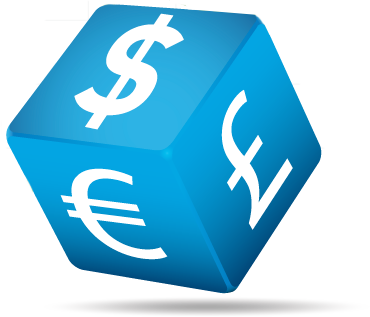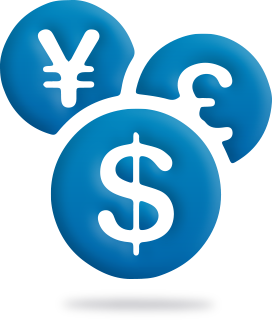Advantages of Trading Forex with Rockfort Markets
LEVERAGE UP TO 500:1
Up to 500:1 leverage available across major and minor currency pairs.
TRADE 24/5
Forex never sleeps. Find opportunity 24 hours a day, five days a week. Robot friendly.
Low Costs
Free trading platform, free data, low spreads, micro lots available, low commissions.
DEEP LIQUIDITY
World class liquidity, deep pools, fast fills, over 60 currency pairs across major markets.
Forex Trading with Rockfort Markets
Participate in the Worlds Largest Market with World Leading Technology.
Also known as FX Trading, Margin FX, Margin Foreign Exchange or Currency Trading, Forex Trading refers to a decentralised, worldwide market, where foreign currencies are exchanged at floating rates by financial institutions, companies, and individuals. Trading in currencies happens 24 hours a day (outside weekends and bank holidays) and there is huge liquidity meaning there is always movement in the market with minimum slippage. Trade FX on MT4 or TWS platforms with no monthly fees, no platform costs, no data costs, low commissions, and super tight spreads! For professional traders and institutions our deep liquidity pools can handle order sizes in the millions!
- Competitive spreads on over 50 currency pairs, 24 hours a day
- Execute with precision across our range of advanced trading platforms
- Advanced order types, including contingent orders
- Get extra transparency and precision with fractional pip pricing
- Implement Forex Robots, Trading Systems, Copy Trading and Algos.
- Automate your FX trading with Expert Advisers from MetaTrader 4

What is Forex?
Forex, or FX, trading involves the act of buying one currency while simultaneously selling another.
Forex, or FX, trading involves the act of buying one currency while simultaneously selling another. A currency pair (i.e. NZD/USD, New Zealand Dollar/US Dollar) shows how many units of the terms currency (the second currency, USD) you would receive for one unit of base currency (the first currency, NZD).
Forex is dynamic, global, and liquid, holding the crown of the world’s largest market, with a daily turnover predicted in excess of $5.3 trillion dollars.

Forex Similarities
Typically, trading forex CFDs also involves leverage which in some cases can be as high as 1:500, which is very different to trading shares where no leverage is involved and you pay interest on the base currency and receive interest on the quote currency. A carry trade is where you hold a foreign currency position that generates positive interest.
Leverage allows you to trade with more money than they actually have in your trading account. For example, if you had 1:100 leverage you could use a $1,000 deposit to control $100,000 worth of currency. Using leverage can result in an increase in gains on profitable trades, however, it significantly increases risk and can result in increased losses on unprofitable trades.
Forex Trading Examples
Buy/sell rates and spread
Buy/sell rates and spread
Forex quotes are built up in two parts or two prices – the BUY rate (or BID rate) and the SELL rate (or ASK rate). These rates are usually written through a slash “/” the price before the slash is the buy price and the price after the slash is the sell price, for example in the NZD/USD the buy and sell prices are presented in the following way 0.6500/0.6503
The buy rate is a price that the party setting the quote agrees to buy the base currency for. The sell rate is a price that the party offering the quote agrees to sell the base currency for. The idea of ‘BUY’ and ‘SELL’ in relation to the retail trader are reversed as it is the party offering the quote price that buys and sells, not the party holding the base currency. In other words, with the NZD/USD if you were to buy the base currency (NZD) of the terms currency (USD), it is necessary to look at the purchase price (or ask price) and if you intend to sell the base currency of the quote, you would need to look at the selling price (or bid price).


